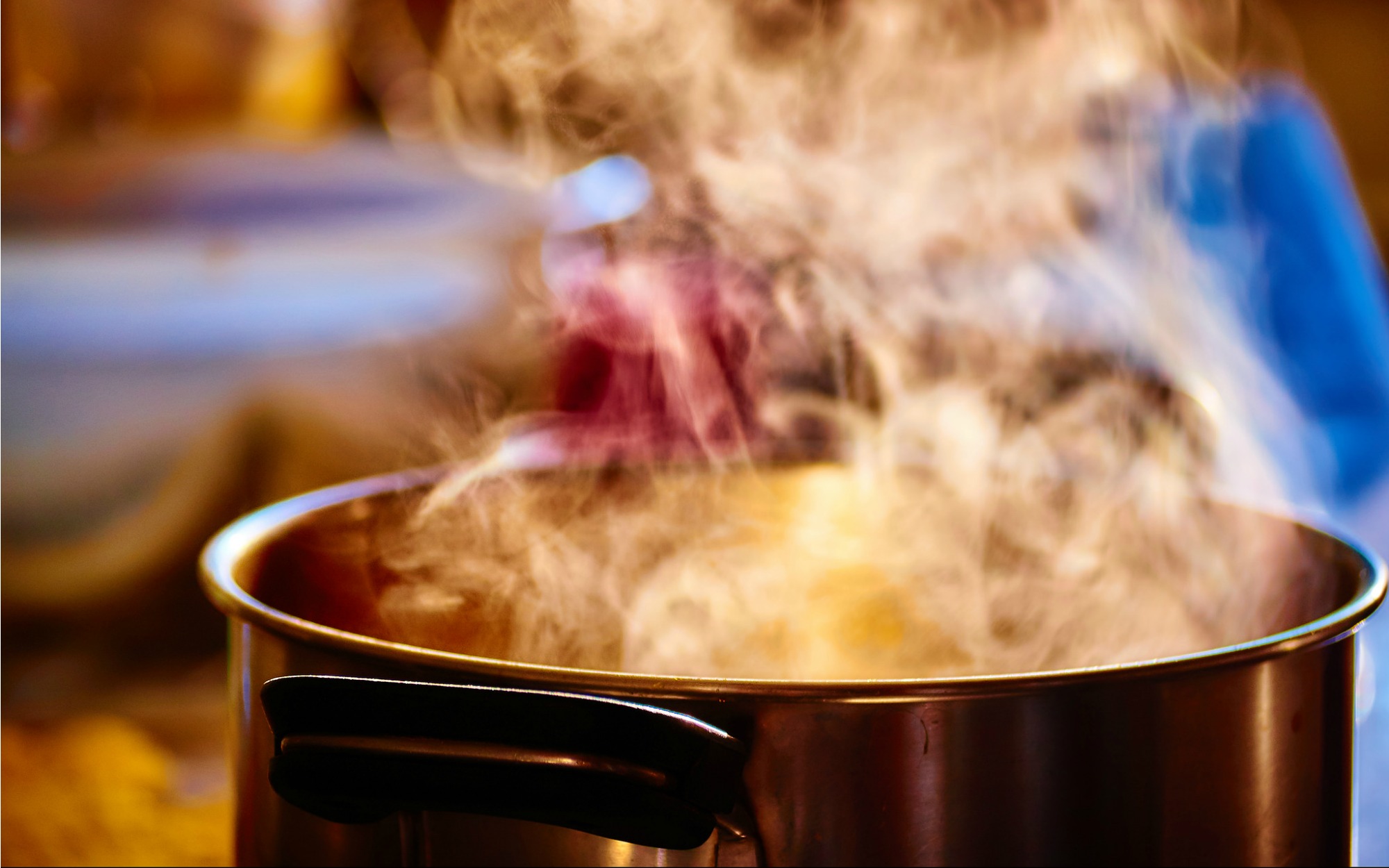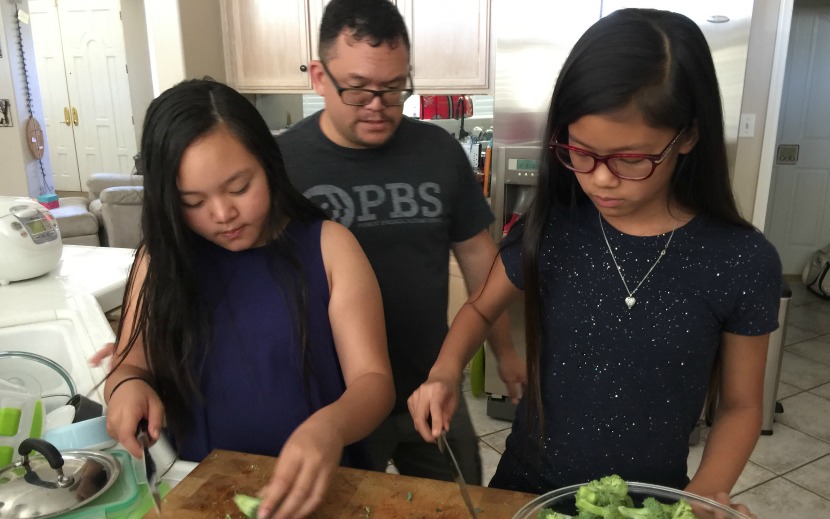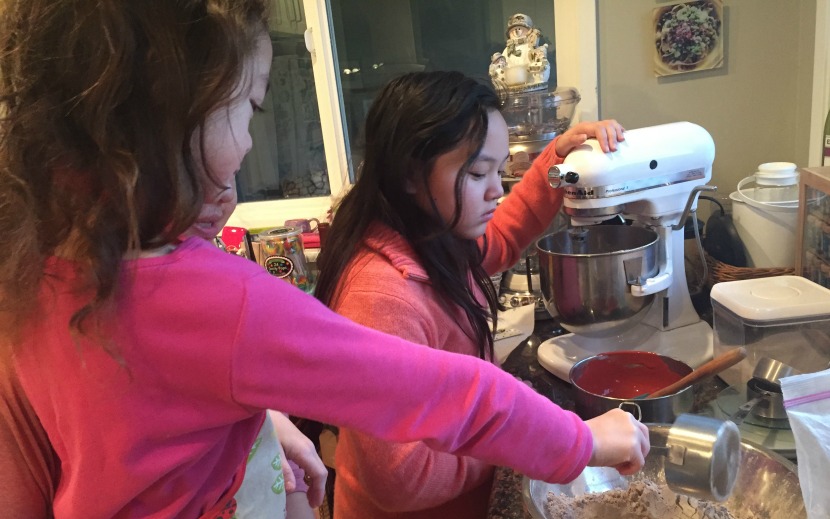Why I Cook For My Kids

Is there any bond deeper than the one forged by food? We can’t think of one. Food spans cultures; food speaks every language; food feeds the soul as much as it fills the belly. And as blogger Jason Sperber, our biracial Japanese-Jewish-American Mash-Up, reveals in this lovely meditation on family and cooking, food is love. We agree.
I grew up in a home where my dad did all the cooking. My Japanese-American mom had a chronic health issue, so after he came home from work she would take a doctor-recommended nap and he’d turn on the television to KCET, L.A.’s public TV station. We’d watch The Frugal Gourmet and Julia Child and Yan Can Cook and those hoity-toity gourmet travel shows that featured several hotel chefs in upscale locales, me watching in the living room and my dad listening from the kitchen while he cooked.

When he wasn’t chopping or stirring, he’d come in through the doorway between the two spaces to glance at the TV. My dad, a white guy, would prepare Japanese-American okazu (an infinitely variable meat-and-veg stir-fry) and teriyaki, with steamed white rice almost always on the plate. My dad had learned to cook from his American-born father, the son of Austrian Jewish immigrants. My grandfather had run his family’s chicken restaurant, and famously was forced to cook for his Army unit during World War II when his superiors found out. But somehow, by the time I came around and my dad was the primary cook in our house, the white rice with which my mom had grown up was the starch on the table, accompanying American-style steaks and chops as frequently as Asian-ish dishes.
A few times, I remember my dad asking if I wanted to help him cook, but I guess after being refused more than once, he just stopped asking. Looking back, knowing how important food and feeding people is to my family — both the family I was born into and the family I’ve built — I wish I’d said yes.
I don’t really know when food and cooking became so important to me. Before I went to college, my biggest culinary achievement was regularly cooking myself breakfast before school, throwing scavenged leftover rice or pasta or meat into a hot pan and scrambling an egg over it all. My family still thinks of me as the picky eater who, as a child, had to be fooled into eating pasta with sauce (white clam sauce instead of red), refused ketchup and mustard and mayo on anything, and ate salad dry. In the intervening time, I became someone who makes his own salsa and vinaigrette, loves to cook for friends, and schedules vacations around what and where we’re eating. Though that no-condiment thing still holds.
I took the place of my own father in the kitchen.
I wooed my one-day-wife, a Filipino-American, with (my white dad’s) teriyaki chicken recipe, broiled salmon steaks, and attempts at Filipino food from recipes I found on the nascent World Wide Web. She and I started cooking together, side by side. We shared what we had grown up with, joking, “Thank you for sharing your culture with me!” as we dished out adobo or teriyaki, pancit or matzoh ball soup. As our life together evolved, I took the place of my own father in the kitchen. My wife, a doctor, works outside of the home full-time, and I am home with our two daughters. Because of how I grew up, it never occurred to me that this was unusual. Men cook, and a variety of ethnic influences, from all the branches of our family and beyond, are always on the menu.
Our kitchen is a place where all of our culinary influences mash up to create something new, something ours. And it’s not just from my side of the family. Growing up with a working mom and an often-deployed Navy dad, my wife and her sister had to take up the chore of feeding their family as adolescents. And while their mom and grandparents would make the Filipino dishes of their homeland — adobo, pancit, garlic fried rice, homey stews and rice porridge — they cut their cooking teeth on creamed soup casseroles and frozen dough.
Similarly, my sansei, or third-generation, Japanese-American mom’s dishes, cooked only if my dad wasn’t home, were tuna noodle casserole with potato chips crushed on top, Passover brisket, corned beef and cabbage, and the Japanese-American classics cucumber salad and finger Jell-O. To me, the tuna casserole, the okazu — I took them all for granted as part of my family’s culture.

Today I take every opportunity to encourage my daughters’ interest in food. Their maternal grandparents, who now live up the street, cook for us a couple times each week. My mother-in-law lovingly recreates Filipino favorites and my father-in-law, who took up cooking with gusto after retirement, loves to google recipes from around the globe. At home, I’ve settled into a mash-up of Asian and Mediterranean influences. A staple of olive oil-braised Tuscan kale mixed with mashed gold potatoes serves as a vegetarian entree or a side dish with pan-roasted fish or seared turkey cutlets.
My youngest, at age seven, will happily eat her favorite meal of teriyaki salmon, roasted garlic-and-lemon broccoli, and jasmine rice every day of the week, and often does in her school lunch thermos. She calls everything green and leafy, “kale.” Big sister, who rejected jarred baby food for smoked chorizo hummus at the age of two, continues to be adventurous, trying spicy things and eating condiments I refuse to touch.
But, unlike my dad, I am not alone in the kitchen. My eleven-year-old loves to help with dinner prep and will proudly tell her mother what she did when we sit down, and my seven-year-old wants to do what her sister does. Both are completely enamored with baking, big sister taking every opportunity to create something sweet for special occasions and little sister asking for fondant at the craft store.
For our family, feeding each other is love.
I think they know, instinctively, that for our family, feeding each other is love. Making even a workaday dinner that they’ve eaten for weeks on end is love. Taking the time to plan and execute a menu for dear friends on the back patio on a hot summer night is love. When they painstakingly planned and executed a Father’s Day breakfast in bed for me last year, with their mother’s help, of Filipino garlic fried rice, fried eggs, and pan-fried Spam cut into hearts with a cookie cutter, that was love. Their culinary inheritance, this authentically inauthentic, multigenerational, multiethnic twenty-first century way of cobbling together the familiar and the new and creating something delicious to share, is love.
I can ask for no greater gift. When my daughters want to chop or stir or season, or when they suggest a menu, or help plan or shop, or when my tween, growing so fast, sets to making a new recipe for cookies or a cake all by herself, I see love. I feel love. I taste love.
Where do you see love, Mash-Ups? Tell us.
Ready to get in the kitchen? Here are some recipes to get you started!
Nishta’s Kheer. Not Just for Diwali!





